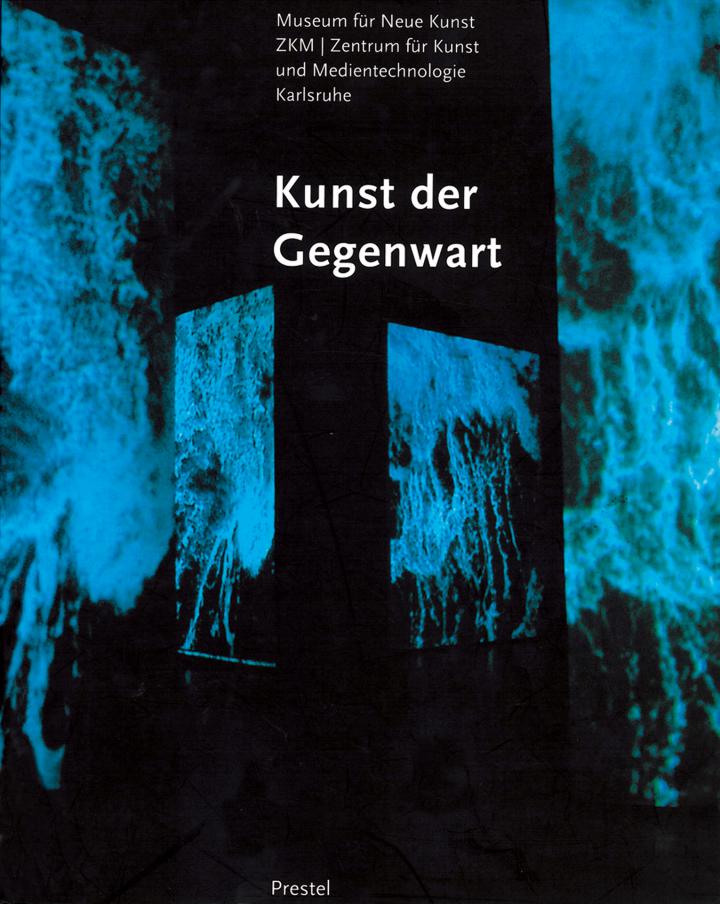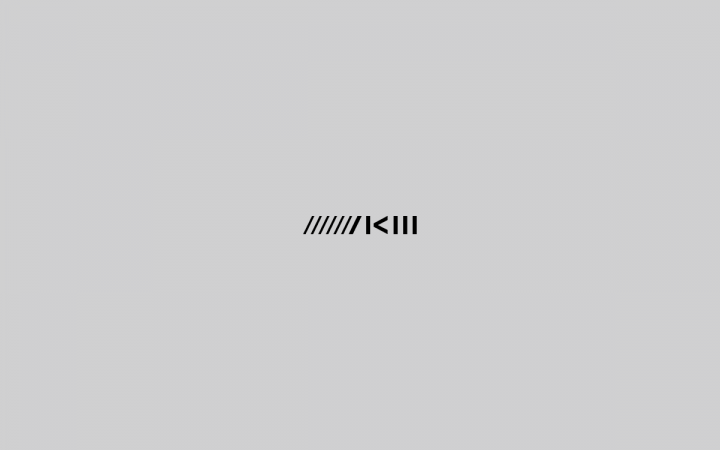Wanzke/Steger/Budesheim
- Members
- Biography
- At the exhibition »Wechsel-Wirkungen. Ungarische Avantgarde in der Weimarer Republik«, held in Kassel in 1986, the artists' group Wanzke/Steger/Budesheim presented a realization of the »Abstract Review« devised in the 1920s by the Bauhaus artist Andor Weininger (q.v.). Making use of the technological possibilities of the 1980s, they created an electro-mechanical theatre piece, to which they gave the title »Blue-grey remains Blue-grey (Blaugrau bleibt Blaugrau)«. Their work won the 'Kulturförderpreis' awarded by the city of Kassel. In the Bauhaus spirit, this work was conceived as a project on which artists from various disciplines might work collaboratively. The music used in the first productions of »Blue-grey remains Blue-grey« was composed by Michael Filgraebe.
Reinhard Wanzke
Jürgen Steger
Reinhard Wanzke was born in Altbach in 1956. From 1978 to 1981 he studied Architecture, Urban Planning and Landscaping, and from 1982 to 1986 Art and Visual Communication, at the Universität Gesamthochschule, Kassel. Wanzke was responsible for the conception, direction and production of »Blue-grey remains Blue-grey«. During the 1980s he produced several video installations and computer-controlled performance pieces. In 1989 he directed the premiere of »Testbilder« (Test Cards) at the Museum Fridericianum, Kassel. In 1989-91 he was the Curator of Video at the documenta-Archiv, Kassel. During this period he founded the KASSELER VIDEOSALON. In 1991-92 he served as Artistic Director and Chief Organizer of the Kassel film festival »überKUNST« (aboutART), which formed part of the 1992 documenta programme. Since 1980 Wanzke has worked on a freelance basis, focusing on media design and the management of cultural events. In 1993-94 he was responsible (in collaboration with the State Russian Museum, Saint Petersburg) for organizing the exhibition »Agitation for Happiness. Soviet Art of the Stalin Era«. In addition to organizing other exhibitions, as well as concerts, Wanzke has also been involved with the development of several CD-ROM projects, most recently (1995-97) the CD-ROM »documenta 1-9: Ein Focus auf 4 Jahrzehnte Ausstellungsgeschichte« (documenta 1-9: A Focus on Four Decades of Exhibition History). In 1997 he was commissioned by the publisher Bertelsmann to oversee the conceptual development of publications related to Expo 2000. Wanzke lives in Kassel.
Jürgen Steger was born in Bad Nauheim near Frankfurt am Main in 1955. He studied Mechanical Engineering at the Rheinisch-Westfälischen Technischen Hochschule, Aachen, and Product Design (especially Exhibition and Furniture Design) at the Universität Gesamthochschule, Kassel. In 1983 he formally qualified as a cabinet maker, and in 1984 he received his degree in Design. He has since worked, on a freelance basis, in exhibition design and in set design for the stage. Steger was responsible for the design and construction of the stage set for »Blue-grey remains Blue-grey«. Following this work, he produced five further designs and realizations for the Theater der Klänge (Sound Theatre) in Düsseldorf. These included »Die mechanische Exzentrik« (The Mechanical Excentric), originally devised by Lászlo Moholy-Nagy (1987), for which the theatre group won the 'Kulturförderpreis' awarded by the city of Düsseldorf; »Die barocke Maskenbühne« (The Baroque Masquerade Stage; 1989); and »Figur und Klang im Raum« (Figure and Sound in Space; 1993). In 1987 Steger founded the design studio »Steger Ausstellungs-Objekte«. In 1994 his work on developing the 'Handrail' Visitor Information and Direction System was awarded by the Design Zentrum Nordrhein-Westfalen for its exemplary 'design quality'. In the same year, commissioned by the Zentrum für Kunst und Medientechnologie Karlsruhe, Steger devised a new design for the touring exhibition »Mienen-Spiele (About Faces)«. His most recent design projects have been in the areas of object design and the realization of the sound sculpture »TILT- and yet it moves«, this last in collaboration with Kerstin Hörner (responsible for dance and choreography), Thomas Neuhaus (software and composition) and Dirk Reith (sound design and composition). This received its first performance at the Folkwang-Hochschule, Essen in June 1996. Steger specializes, above all, in the design and installation of computer-controlled cybernetic objects; and he works for museums, art galleries, theatres and trade exhibition stands. He lives in Kassel.
Jörn Peter Budesheim
Jörn Peter Budesheim was born in Marburg in 1960. He first became a painter when living in Saarbrücken, and later studied Painting at the Hochschule für Bildende Künste, Kassel. Budesheim adapted Andor Weininger's initial set design for his »Abstract review« for use in »Blue-grey remains Blue-grey« and painted three of the four figurines that appear during the course of this theatre piece. He is an independent print-maker and is currently engaged on a private project. He Iives in Kassel.
Individual exhibitions Budesheim (selection)
1979 »Karton«, Moderne Galerie, Saarbrücken
1984 »Vom Flüstern der Neigungen zum Großen des Wahnsinns«, Orangerie, Kassel; Mousonturm, Frankfurt/M; Hochschule für Bildende Künste, Hamburg, and at a venue in Amsterdam
1987 »Warum gab es das nicht schon früher«, Hochschule für Bildende Künste, Kassel
1988 »Hunde wollt Ihr ewig malen«, Kulturfabrik Salzmann, Kassel
1989 »Lausige Schatten«, Museum Fridericianum, Kassel
Exhibitions of »Blue-grey remains Blue-grey« (selection)
1986 »Wechsel-Wirkungen - Ungarische Avantgarde in der Weimarer Republik«, Neue Galerie, Kassel
1987 documenta VIII, Kassel
1988 Brotfabrik, Bonn-Beuel; Dramatisches Zentrum, Vienna; Kunstverein, Cologne; Tiroler Landesmuseum Ferdinandeum, Innsbruck
1989 »Exemplarisches 4«, Kassel; Shaffytheater, Amsterdam; 6. Internationales FigurenTheaterFestival, Erlangen; Schirn Kunsthalle, Frankfurt/M; »T'art festival«, Enschede; Zaal De Unie, Rotterdam; Goethe-Institut, Rotterdam; Stadsschouwburg, Utrecht; Theater Achterom, Breda; Festveranstaltung zum 120. Bestehen der
Baugewerkschaften, Bockenheimer Depot, Frankfurt/M; Festival di Morgana, Goethe-Institut, Palermo
1990 Pariser Hoftheater, Wiesbaden
1991 »MultiMediale 2«, Zentrum für Kunst und Medientechnologie, Karlsruhe
1993 »steirischer herbst '93«, Graz; Ensemble Modern, Alte Oper, Frankfurt/M; Ensemble Modern, Akademie der Künste, Berlin
1994 »2. Konzert zeitgenössischer Musik«, Badisches Staatstheater, Karlsruhe
[1997]
![Wanzke/Steger/Budesheim, »Blaugrau bleibt Blaugrau« [Blue-Grey Stays Blue-Grey], 1986, stage ; various pieces of scenery, steel tubes, wooden poles, movable walls, strips of cloth, deflection sheaves and rollers, electric motors, 4 figurines, speakers, pr / © VG BIld-Kunst, Bonn 2014; photo © photo: Martin Luxenburger Werk - Blaugrau bleibt Blaugrau](https://zkm.de/sites/default/files/styles/r17_1280/public/bild/MNK_00388_00335_wanzke_blaugrau_001.jpg?itok=jdZuxqsr)

